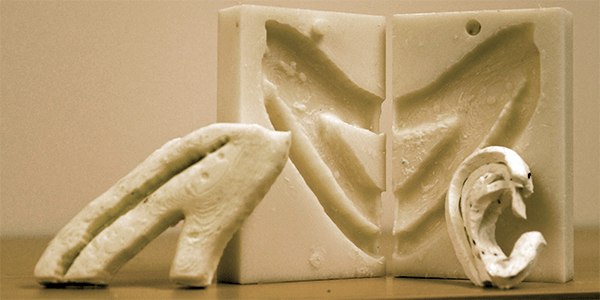Photo: The UW team used a 3-D printer to create a negative mold of a patient’s ribs from a CT scan. Surgeons take pieces of those ribs and “carve” them into a new ear. Credit: University of Washington
A recent UW Today article profiles a collaboration between UW Bioengineering alumna Sharon Newman and Angelique Berens, a UW School of Medicine otolaryngology – head and neck surgery resident. The team has used 3-D printing to create a low-cost pediatric rib cage model that aspiring surgeons can use to practice making new ears. Their results are described in an abstract presented this week at the American Academy of Otolaryngology – Head and Neck Surgery conference in Dallas, Texas.
When children have malformed or missing ears, surgeons can harvest their rib cartilage to carve new ears. However, aspiring surgeons must practice this complicated procedure to be prepared to work with only as much cartilage as they need to make the ear. They lack lifelike materials to practice with, and most commonly use bars of soap or vegetables, or sometimes adult cadaver or pig rib cartilage.
Newman and Berens teamed up in the UW BioRobotics lab while they both worked under electrical engineering professor Blake Hannaford. Newman devised a method for uploading and printing CT scans, and to 3-D print a negative mold of a patient’s ribs. The molds could then be filled with a silicone material, resulting in a model resembling rib cage material.
The team’s models were deployed in a study in which experienced surgeons practiced the ear carving technique using models produced from a mold modeled from a CT scan of an 8-year old patient. The surgeons compared the silicone material to the firmness, feel and suturing quality of real rib cartilage and more costly dental impression material. They all preferred the silicone models, and recommended introducing them as a surgical training tool.
Sharon Newman graduated with a Bachelor of Science in bioengineering from UW in June 2015. She currently holds a Fulbright Student Study/Research Grant and Whitaker International Program Fellowship, and is studying neuroprosthetics, robotics and engineering while working with universities and hospitals in Germany, Switzerland and Italy.
Read “3-D printing techniques help surgeons carve new ears” at UW Today



